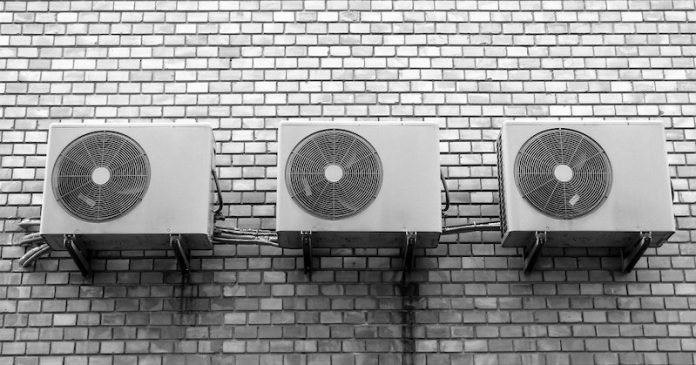
In a new study, researchers found air circulation and ventilation is key to preventing a build-up of droplets and aerosols that spread COVID-19.
They found air conditioning may boost COVID-19’s spread indoors.
The research was conducted by a team at the University of California, Santa Barbara.
Most COVID guidelines have stressed the 6-foot physical distancing rule, with the idea being that the virus spreads through large droplets produced when we talk, cough, or sneeze.
Relatively heavy, these droplets tend to fall to the ground before they travel more than a few feet.
However, there are outbreaks even when people are keeping this 6-foot distance, and especially indoors.
More recent evidence suggests that the virus also travels in smaller droplets and aerosols, which can linger in the air for hours.
In the study, the team decided to apply their expertise in fluid dynamics to COVID super-spreading events to understand how they might have happened. The crucial factor, they found, was air circulation.
In late January and early February, 10 individuals from three families all fell ill after eating at the same air-conditioned restaurant in Guangzhou, China on Chinese New Year.
The cases all were linked to a single contagious customer at the restaurant.
All the diners who came down with the infection sat in one section of the restaurant, which was served by a single air conditioning unit.
Patrons at another table close to the infected person, but under the breeze of a different AC unit, did not become ill.
Results showed the air conditioning in the rear section of the restaurant allowed the virus particles from a contagious individual to recirculate and infect other diners that were seated in that area.
In the study, the team built a model of how the flow carries around particles, which are called “passive scalars” because they are carried by the flow, but don’t influence it.
They found that the concentration of these droplets and aerosols are actually building up over time in a confined space.
This contrasted sharply with the belief that infectious droplets were large and would just settle out of the air.
After 15 minutes in an unventilated room the size of that section of the restaurant, a person anywhere would experience the same effects as if they had been sitting next to the contagious individual.
Many people had assumed that air conditioning would mitigate this issue. Namely, the combination of the AC filter and the intake of outside air would be enough to keep viral loads in check.
The researchers found, however, that normal air conditioning only delayed the particle buildup in the restaurant by 10 minutes, and decreased the one-hour exposure rate to 2.5 times what it would have been initially right next to the contagious person.
The team says these superspreaders are not really people, they are air conditioning and recirculating airflow in confined spaces.
If the HVAC system isn’t taking in 100% new air and doesn’t have high-quality filters, the concentration of small droplets and aerosols, and thus virus particles, will likely build up over time.
This has major implications for how people approach risk management in offices and classrooms.
Good ventilation, accredited filters, and face coverings can help reduce infection rates. In fact, people applied similar strategies to good effect when tackling tuberculosis in the days before antibiotics.
But most office and apartment AC units simply aren’t strong enough to handle the better filters and increased airflow. People need a new generation of air conditioners for the spaces where people spend most of their time.
One author of the study is Bjorn Birnir, the director of the Center for Complex and Nonlinear Science.
The study is published in medRxiv.
Copyright © 2020 Knowridge Science Report. All rights reserved.



